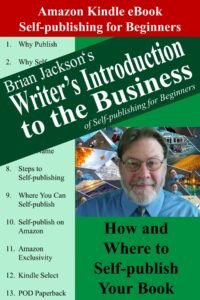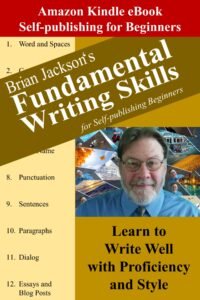Believe it or not, there’s some math involved in optimally pricing your eBook (and your paperback) to produce the most revenue on Amazon. This section digs into those equations to find the optimal solution to Amazon eBook pricing, and it proves to be quite simple.
Price Your eBook at or above $0.99
Right up front, let’s establish a minimum boundary to our pricing options. The minimum price you can charge for an Amazon Kindle eBook is $0.99. I’m not sure what the maximum price is (I’ve never come close). This yields the following price range:
Always price your book at or above $0.99.
Note: For every rule in self-publishing, there are multiple exceptions. For example, you may try to make your book perma-free (or permanently free) on Amazon through a convoluted and arcane ritual outlined later in this book. You may also choose to make your book free or discounted for a short duration through a Kindle Select Program promotion. You may even go so far as to make your eBook virtually any price you’d like on SmashWords, including free (even though you shouldn’t do this– see why in just a few paragraphs). Then there’s the minimum POD paperback price, which is only constrained by production costs, which always exceed the eBook price. But here I begin to stray…
Amazon awards a standard 35% royalty on all Kindle eBooks sold. Frankly, this royalty percentage is terrible. It’s so bad that it’s only slightly better than the 25% royalty you’ll receive from the most generous publishing house. In fact, this royalty rate is so bad that no indie writer worth their salt would publish on Amazon this amount. Unless there was a catch.
Guess what? There’s a catch. A huge one!
Price Your eBook at the Sweet Spot: $2.99
Amazon is willing to award a whopping 70% royalty to any author/publisher who is willing to satisfy the following two simple requirements:
- Price your eBook from $2.99 to $9.99.
- Price your eBook no less through a competitor (e.g. Apple Books).
Note: Amazon still only offers a 35% royalty for certain countries (Japan, India, Brazil and Mexico among them) unless you enter the Kindle Select program (see Chapter 1.3 above).
Since these two requirements are painless to satisfy, and since we’ll be receiving most of our revenue from Amazon Kindle sales and will therefore always be publishing there, we’ve encountered our first reasonable constraint to book pricing:
Always price your book from $2.99 to $9.99.
Unless, of course, you do otherwise (more on this to follow).
Armed with this information, we can now identify three important Amazon eBook price points:
| Minimum Price | $0.99 x .35 = $0.35 | The New Free? |
| Minimum 70% Price | $2.99 x .70 = $2.09 | The Sweet Spot |
| Maximum 70% Price | $9.99 x .70 = $6.99 | Never Even Come Close |
Unfortunately, something important I want you to take away from this discussion isn’t readily evident in the above table. Notice the price leap that occurs between:
$2.98 x .35 = $1.04
and just one cent more:
$2.99 x .70 = $2.09
This is what I refer to as The Sweet Spot: $2.99. The following provides a graphical depiction of this Amazon eBook pricing phenomenon:

After viewing this chart, you may be asking yourself why you shouldn’t simply keep increasing your price beyond the $2.99 price point. After all, you continue to receive a 70% royalty all the way up to $9.99.
What’s the reason you shouldn’t do this in a word? Competition.
Assuming you’ve had a chance to research your genre and niche, then you’ve most likely noticed the preponderance of $2.99 or even $0.99 books that you’ll soon be competing against. Imagine launching your shiny new $9.99 eBook into this crowded harbor. I fear it might sink!
Here’s what you want to achieve with your pricing in a nutshell:
The minimum price that will yield a 70% royalty on Amazon Kindle eBooks.
$2.99! Here we are back at the Sweet Spot again.
Price the First in Series at $0.99 as a Lead Magnet
You should seriously consider pricing the first book in any series at $0.99. The reason is to get people to buy the book, get hooked on the series and buy the rest of the books in the series at your elevated price of $2.99.
Pricing anything low or even free to lure people into spending even more money is known as providing a lead magnet. A lead magnet leads the customer in the direction you want while providing a low entry-level price to your product line.
I also typically price short works at $0.99 (e.g. short stories and books that didn’t fill out to the desired length).
Keep in mind that you’ll receive just $0.35 on the sale of such books, so keep their number at a minimum.
Price the Latest Releases at a Premium: $3.99
Your latest books in a series deserve to be priced at a premium, say $3.99. Since people will be eager to purchase the latest book and you’ll be advertising this work, a premium price should be sustainable in the market place.
Just remember, the sweet spot, the spot you never want to wander too far from, is $2.99.
Price 3 Book Bundles at a Discount: $5.99
One of the practices I’ve fallen into is bundling $2.99 books (even to include a $0.99 book) into three book bundles and charging $5.99 for the bundle. This provides the reader with three books for the price of 2 and can generate a great deal of additional income from those willing to commit to get a bargain.
Plan your series around three book bundles and release these bundles at the appropriate intervals of time.
Price Your POD Paperback to Sell eBooks: $7.99
Remember, the purpose of a POD paperback is to drive eBook sales. Since Amazon displays the paperback price crossed out, followed by the eBook price in the upper right-hand corner of your book description page, you should charge a relatively large amount for your paperback to make the eBook price appear to be an incredible deal.
The least you’ll probably be able to charge for your paperback is $5.99 to cover publication costs. A price of $9.99 seems inflated. I, therefore, like to price my paperback releases at $7.99. As a result, your Amazon book description page will show your book marked down from a maximum price of $7.99 to $2.99. This should help a lot to sell eBooks.
Why Use .99 or .97 Pricing
So, why price books ending with $0.99 instead of rounding the price up to the nearest dollar? Two reasons:
- Because $2.99 seems a lot less than $3.00. It’s a physiological thing involving what we mentally perceive as a large number (a rounded number).
- Because $2.99 is the location of the Sweet Spot as set by Amazon.
Note that long term marketers feel that you should instead terminate prices with $0.97 to make it appear less obvious that you’re charging the maximum number of cents without charging a full dollar. The fact that Amazon has set the Sweet Spot at $2.99 shows they don’t agree with this marketing strategy.
Bottom line: End all your prices with $0.99 to maximize profits.
How to Make an Amazon eBook Perma-Free
A perma-free book is a book that is permanently free on Amazon. Rather than using perma-free pricing, I prefer to price my lead magnet books at $0.99. However, should you want to go perma-free, the following is the rather odd process that you must go through.
- Publish your book on Amazon for $2.99.
- Publish your book on another platform. I recommend Barnes & Noble or the Apple Store for free.
- Get friends to notify Amazon that your book is free on another platform.
- Amazon will eventually price match your book by making it free.
Note that this is the only way to offer a book for free on Amazon.
I’ll see you in the classroom,
–Brian


















